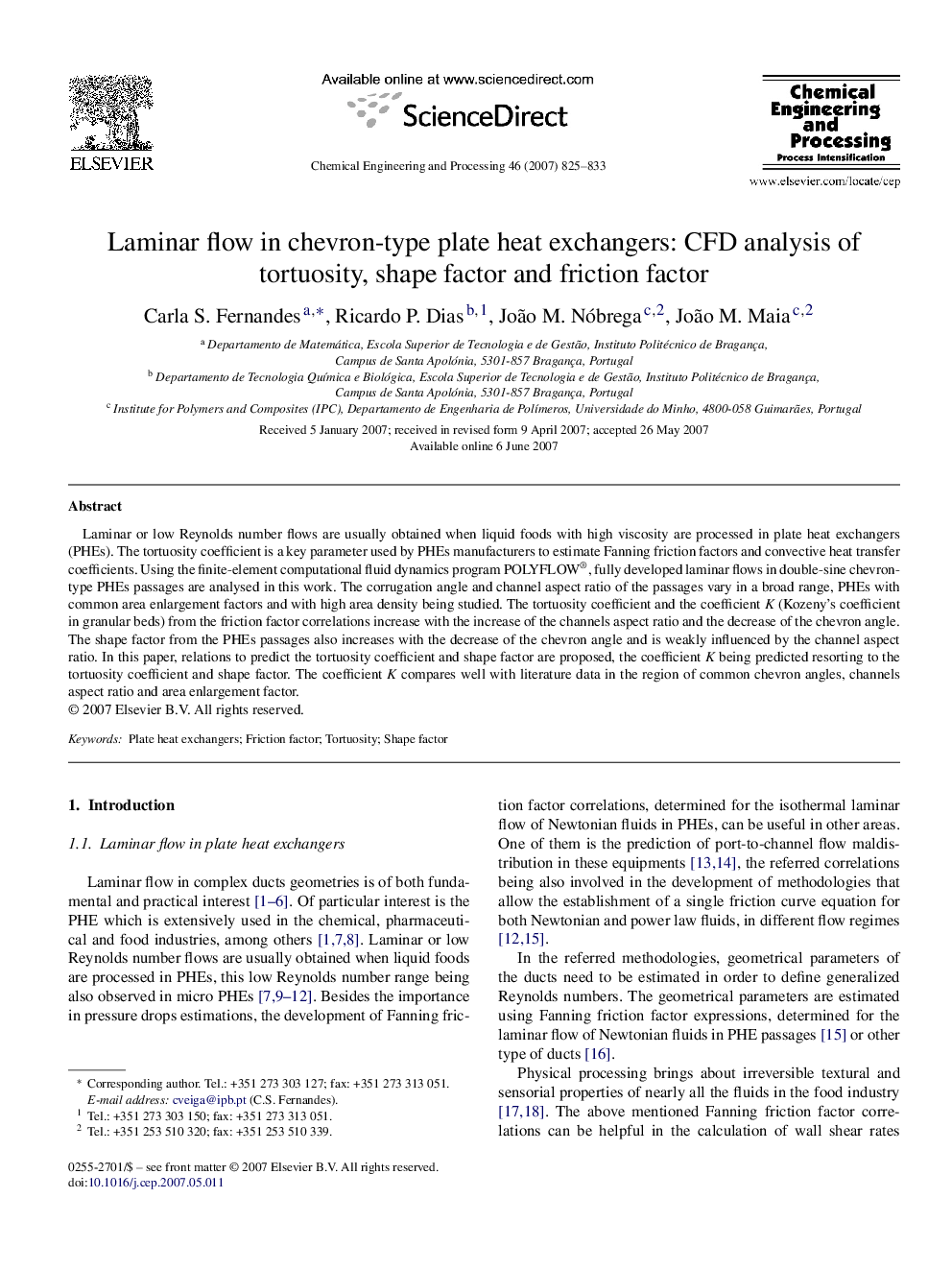| Article ID | Journal | Published Year | Pages | File Type |
|---|---|---|---|---|
| 687743 | Chemical Engineering and Processing: Process Intensification | 2007 | 9 Pages |
Laminar or low Reynolds number flows are usually obtained when liquid foods with high viscosity are processed in plate heat exchangers (PHEs). The tortuosity coefficient is a key parameter used by PHEs manufacturers to estimate Fanning friction factors and convective heat transfer coefficients. Using the finite-element computational fluid dynamics program POLYFLOW®, fully developed laminar flows in double-sine chevron-type PHEs passages are analysed in this work. The corrugation angle and channel aspect ratio of the passages vary in a broad range, PHEs with common area enlargement factors and with high area density being studied. The tortuosity coefficient and the coefficient K (Kozeny's coefficient in granular beds) from the friction factor correlations increase with the increase of the channels aspect ratio and the decrease of the chevron angle. The shape factor from the PHEs passages also increases with the decrease of the chevron angle and is weakly influenced by the channel aspect ratio. In this paper, relations to predict the tortuosity coefficient and shape factor are proposed, the coefficient K being predicted resorting to the tortuosity coefficient and shape factor. The coefficient K compares well with literature data in the region of common chevron angles, channels aspect ratio and area enlargement factor.
